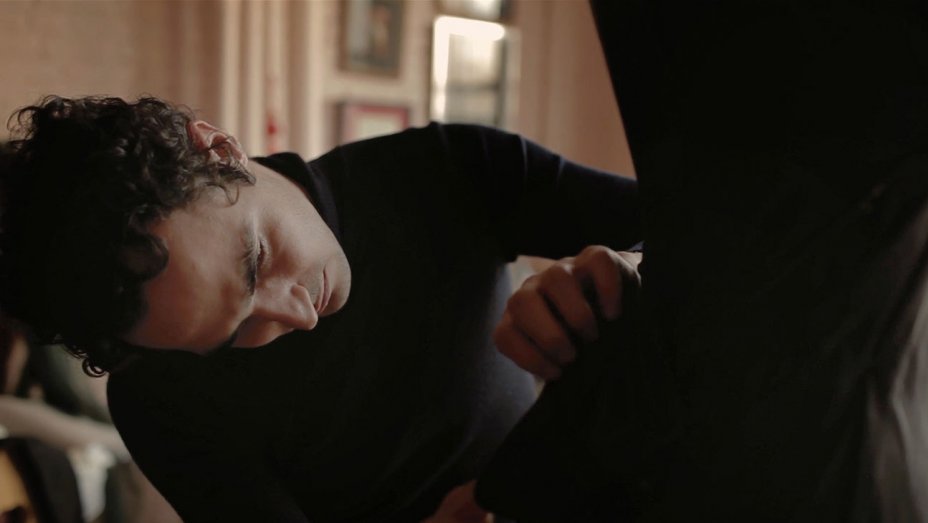With the flair of Charles James and the eclectic personality of any modern-day celebrity, there was a time when Zac Posen was New York’s poster-boy for young talent in American fashion.
“House of Z,” the newly released documentary chronicling Posen’s rise, demise and comeback, gives an insightful personal look at the designer’s life in the spotlight with some serious takeaways that strip away the —as Posen and friends like to say in the documentary— “smoke and mirrors” of the not-so-glamorously glamorous fashion industry.
Born in New York to Susan Posen, a corporate lawyer at the time, and Stephen Posen, a photorealist painter, Zac grew up with his sister Alexandra in industrial Soho. Clips of little Zac dancing, singing, and painting show that Posen has always been engrossed in an environment where creativity was nurtured and appreciated.
“In our household, creativity and imagination really was our religion,” Alexandra says.
After he struggled to “fit in” in middle school, Posen switched schools to Saint Ann’s School, the arts-oriented private school in Brooklyn, which quickly boosted his confidence. The school had no grades, beautiful young ladies who were not only friends but also models and an environment that for him seemed to be like home.
As Posen thrived and grew into his own as a young creative, he set his eyes on London’s Central Saint Martins where two of his idols at the time, Galliano and McQueen, attended. It was there that supermodel-icon Naomi Campbell discovered Posen in a basement apartment in Bloomsbury, London.
With the stamp of approval by the Naomi Campbell, a writer for The New York Times called Zac’s mom and said she wanted to write a piece: “A Star is Born.”
And then, a star was born.
Originally a dream and business that started in the Posen family’s kitchen, where designs were exclusively made for private clientele and Zac’s closest girlfriends, Posen’s trajectory lead to shows with front rows full of heavy-hitting editors and fashion deities like Anna Wintour, André Leon Talley, and Grace Coddington.
Money began to come in as Posen worked his way to the top, which leads to the it-investment from Sean “Diddy” Combs.
“And [Diddy] turned to me [at dinner] and said what do you need,” Susan said. “And I said a substantial investment.”
Cue the paparazzi, the spotlight, and more money than you can imagine— and you know what they say, mo’ money, mo’ problems.
The facade of Zac Posen’s celebrity status was an A-lister, but he was still struggling with investors and buyers and their opinions on collections. Press eventually began to question why they even attended Posen’s shows.
The Great Recession hit, causing a devastation in the fashion industry: fewer parties and more worries. Posen’s mother, CEO of House of Z at the time, linked Zac with other brands like Target and Saks for collaborations to keep the company afloat.
“There was always tension between needing to do these things,” says Susan Posen, “and Zac feeling like he didn’t want to whore out the brand.”
When his fashion equity depleted in New York, Posen opted for Paris. The collections appeared to be “overcompensating” with no clear vision. The press delivered critical critiques and harsh reviews amidst other backstage issues, which lead to the peak of Posen’s demise.
“Fashion loves to see people fall,” says Nicole Phelps of Vogue. “He was the designer who we got to watch fall.”
We see the vulnerable side of Posen holding back tears as his voice cracks, explaining the untold story of the internal issues in the company at the time of his “tyrannic phase,” as his friend Paz de la Huerta called it. Afraid to let anyone in, Posen was terrified of losing the life he worked so hard to create.
Cue the most heartfelt, moving moment of the film.
“Sometimes things like that happen when you start building things. You press hard, [and] other pieces sort of break,” says Susan to a young Zac as they play with Legos. “But then you put them back. I’ll hold it, so that won’t happen. Okay?”
It’s okay, we teared up, too.
After some time of self-reflection and getting a new team together, which included his partner Christopher Niquet, Posen’s comeback to New York for Fall/Winter 2012 was highly anticipated but ultimately unsuccessful.
“The first look comes out and it’s like a dress that finishes a fashion show,” says Christina Binkley. “Oh, he’s doing this backwards! Okay. We’ll wait for the daywear. And it’s look, after look, after look.”
With Posen back in the good graces of the press, it begged the question how would his impeccably crafted gowns sell in the age where consumerism is vital to a company’s success? Not to mention, would his success continue?
Not only was the documentary a perfect kick-off for fashion week with a perceptive look into Posen’s brand, but it elaborates on some of the consequences fashion’s leading figures face with business and other factors that go into being successful in the industry.
Zac’s answer is something you will have to see for yourself in ‘House of Z,’ now available to watch on Vogue.
Written by Anthony O’Baner
Images courtesy

